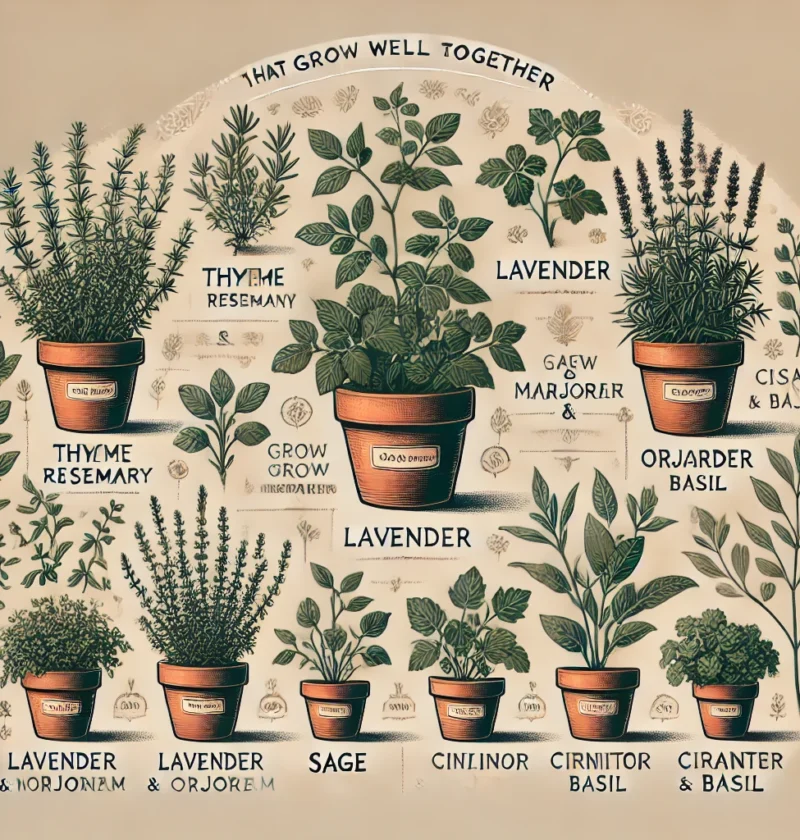Did you know that some plants grow better together? Companion planting is a gardening technique that pairs plants to enhance growth, repel pests, and improve flavors. Whether you’re planting in pots, raised beds, or a traditional garden, choosing the right plant partners can boost your harvest and create a healthier environment.
In this guide, we’ll explore the best plant combinations, why they work, and how to create a thriving garden using these perfect plant partnerships! 🌿✨
—
🌿 Table of Contents 🌿
1️⃣ What is Companion Planting?
2️⃣ Why Grow Plants Together?
3️⃣ Best Plant Combinations for Your Garden
4️⃣ How Companion Planting Works
5️⃣ Mistakes to Avoid
6️⃣ FAQs About Companion Planting
7️⃣ Final Tips & Call to Action
—
1️⃣ What is Companion Planting?
Companion planting is the practice of growing specific plants together to improve growth, repel pests, and enhance nutrient absorption. This technique is commonly used in organic gardening to reduce chemical pesticides and fertilizers.
Some plants provide shade, while others repel harmful insects or attract pollinators. When paired correctly, these plants create a balanced ecosystem that leads to higher yields and healthier plants.
—
2️⃣ Why Grow Plants Together?
✔ Natural Pest Control – Some plants repel pests or attract beneficial insects.
✔ Improved Growth & Flavor – Certain plant pairings enhance each other’s flavors and boost nutrient absorption.
✔ Better Space Utilization – Companion planting saves space by pairing plants with similar care needs.
✔ Soil Health Benefits – Some plants fix nitrogen in the soil or prevent nutrient depletion.
✔ Stronger & Healthier Plants – Companion plants protect each other from diseases and extreme weather.
—
3️⃣ Best Plant Combinations for Your Garden
Here are some of the most beneficial plant partnerships to try in your garden:
🌞 1. Thyme & Rosemary
✅ Why they work together:
✔ Both require full sun and low water levels.
✔ Their strong scents repel pests like aphids and whiteflies.
✔ Ideal for Mediterranean gardens or dry climates.
🌿 Pro Tip: Plant thyme along the edges of raised beds or pots—it spreads as a ground cover, helping retain moisture.
—
🌸 2. Lavender & Oregano
✅ Why they work together:
✔ Lavender repels pests and attracts pollinators like bees and butterflies.
✔ Oregano acts as a natural pest deterrent, keeping harmful insects away from lavender.
✔ Both thrive in well-drained soil and full sun.
🌿 Pro Tip: Place lavender in the back and oregano in the front to create a visually appealing and functional combination.
—
🌼 3. Sage & Marjoram
✅ Why they work together:
✔ Both herbs enjoy similar growing conditions—well-drained soil, full sun, and minimal watering.
✔ Marjoram enhances the flavor of neighboring plants.
✔ Sage acts as a natural pest repellent, especially against cabbage moths and beetles.
🌿 Pro Tip: Trim marjoram frequently to encourage more growth and prevent it from overtaking sage.
—
🥗 4. Cilantro & Basil
✅ Why they work together:
✔ Both love moisture and partial shade.
✔ Their aromatic properties repel aphids and spider mites.
✔ Perfect for kitchen gardens—always have fresh herbs for cooking!
🌿 Pro Tip: Harvest basil leaves frequently to promote continuous growth and prevent flowering too soon.
—
🍅 5. Tomatoes & Basil
✅ Why they work together:
✔ Basil repels tomato pests, including hornworms and flies.
✔ Enhances the flavor of tomatoes.
✔ Both plants thrive in warm temperatures and moist soil.
🌿 Pro Tip: Plant basil near tomato plants but not too close, so they don’t compete for nutrients.
—
🥕 6. Carrots & Onions
✅ Why they work together:
✔ Onions repel carrot flies, which attack carrot roots.
✔ Carrots help break up compact soil, allowing onions to grow deeper.
🌿 Pro Tip: Interplant carrots and onions in rows for efficient use of space and pest control.
—
🥒 7. Cucumbers & Radishes
✅ Why they work together:
✔ Radishes repel cucumber beetles.
✔ Cucumbers provide shade to radishes, preventing them from becoming bitter.
🌿 Pro Tip: Harvest radishes quickly to prevent them from competing with cucumbers for nutrients.
—
4️⃣ How Companion Planting Works
🌱 Repelling Harmful Pests: Certain plants release natural chemicals that deter insects.
🌸 Attracting Pollinators: Flowers like lavender draw bees and butterflies for pollination.
💧 Improving Soil Health: Plants like beans fix nitrogen in the soil, benefiting neighbors.
🌿 Providing Shade & Protection: Taller plants shade delicate ones, preventing heat stress.
—
5️⃣ Mistakes to Avoid
❌ Overcrowding Plants – Leave enough space for air circulation.
❌ Pairing Plants with Different Needs – Match plants with similar sun and water requirements.
❌ Planting Competitive Plants Together – Avoid plants that compete for nutrients (e.g., onions and beans).
❌ Ignoring Pest Relationships – Research which plants attract or repel pests.
—
6️⃣ FAQs About Companion Planting
Q: Can I do companion planting in pots?
Yes! Many plant combinations thrive in containers, like basil & tomatoes or lavender & oregano.
Q: Can I mix flowers with vegetables?
Absolutely! Flowers like marigolds and nasturtiums deter pests and attract pollinators.
Q: How do I know which plants work well together?
Use a companion planting chart or experiment with traditional pairings like those in this guide.
—
7️⃣ Final Tips & Call to Action
🌿 Start Small – Try a few companion plants in pots before expanding to a garden bed.
🌞 Observe & Adjust – Notice how plants respond and adjust spacing if needed.
🐝 Encourage Pollinators – Add flowers like lavender to attract bees.
📌 Try these plant pairings and let us know how your garden grows!
⭐ Comment below with your favorite plant combinations!
⭐ Tag us in your garden photos!
⭐ Share this guide with fellow plant lovers!
🌱 Happy Gardening! 🌱💚





